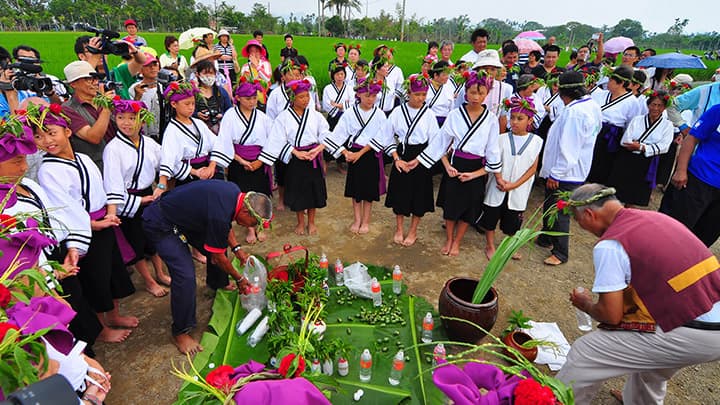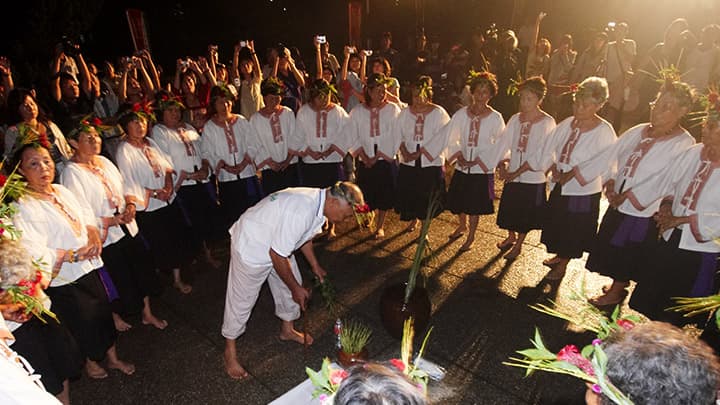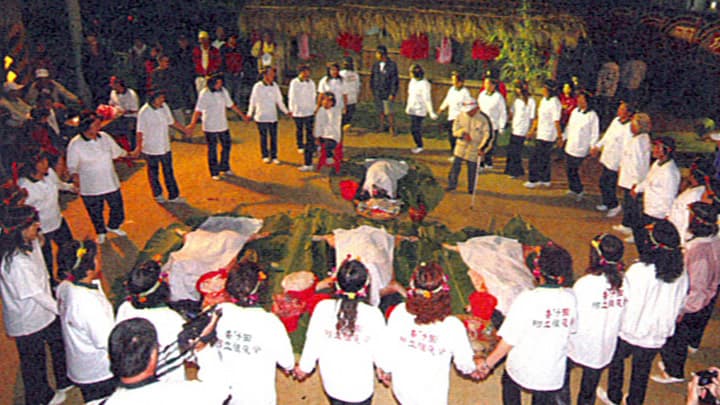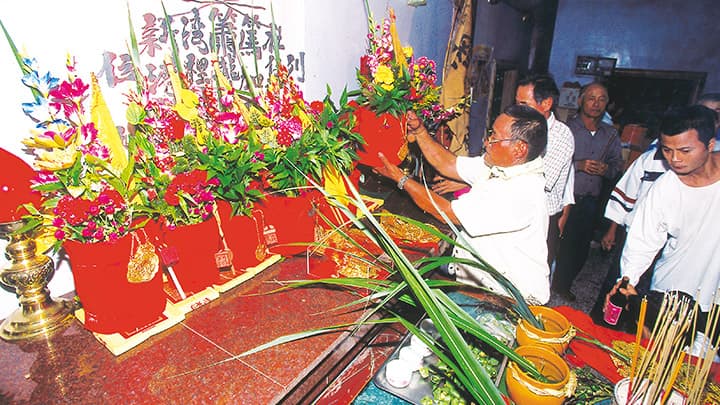Liouchongsi Pingpu Night Sacrifice
Liouchongsi Pingpu Night Sacrifice
If the culture of a tribe has not been recorded in historical documents, it will be lost through changing times.
Currently, there are many traditional cultural elements among the aboriginal tribes of Taiwan that are in danger of gradually disappearing. In light of this situation, the Pingpu Tribes are now making efforts to pass down their culture, by holding an annual Pingpu Night Sacrifice.
Something that has been passed down for hundreds of years should not be ignored
According to a Chinese saying, "Something that has been passed down for hundreds of years should not be ignored". In other words, in this matriarchal society, the first ancestor was not Han Chinese, but Taiwan Aboriginal. Many people in Taiwan maybe have Pingpu ancestry, thus, it does not matter whether one is Pingpu or Han Chinese, everyone is welcome to attend and learn more about the meaning and origins of the Liouchongsi Night Sacrifice, and to experience the mysteries of the Pingpu culture.
Through the sharing of the Pingpu culture and products, and through the holding of this ceremony, the people of Liouchongsi hope that others can learn more about their culture, and better understand the powers of nature and respect the natural environment.
Liouchongsi
Liouchongsi is a major river, located to the south of Baihe Dist., its source situated between Dadong Mountain and Jhentou Mountain. The bending, zigzagging path that the river takes going down the mountains provides a mysterious, immeasurable, profound feeling, creating the impression of different rivers joined together at the many river bends. Starting from Congzihkang, every different section that the river meanders down is considered to be a "chongsi" (duplicate river). Generally speaking, the name "Liouchongsi" (six duplicate rivers) refers to its flowing through several villages, the largest of which is named "Liouchongsi Village". The name comes from the fact that in order to go there from Dongshan Dist. and Baihe Dist., one must pass through six bends in the river, thus it was given the name "Liouchongsi", and the largest village in its vicinity was also given this name. After the KMT took over Taiwan in the late 40's, the name was changed to "Liousi Village", and it came under the jurisdiction of Baihe Dist. in Tainan City. It consists of about 100 households that have Pingpu ancestry. Liouchongsi was originally a hunting ground for a subgroup of the Pingpu Hongya Tribe, known as the Duoluoguo. During the Ching Dynasty, this group was living in the territory occupied by the Dawulong Sub-Tribe, a part of the Taivoan Tribe (present-day Yujing and Nansi Townships). Subsequently they were forced to migrate to the northern part of the Liouchongsi River bank, where they established a new community, calling themselves the Dawulongpai Tribe. As the Han Chinese opened up the lands for cultivation, they moved into the mountains, arriving in succession at Liouchongsi. After the 1915 Tapani Incident under the Japanese occupation (an uprising against the Japanese), another large group of Pingpu Aboriginals moved to Liouchonsi. Thus, people of the Pingpu Tribe were living alongside the Han Chinese. In this area, the Pingpu settlements are mostly in the Liouchongsi River Valley, to the west of Sanchongsi Village.
Located in Tainan City, the Liouchongsi River flows between Guanling in Baihe Dist., and the Dongshan Village mountain springs. It has a closed terrain, in a beautiful landscape area of peach blossoms. The river follows a path between mountains, experiencing frequent wind and rain. Thorn trees stand everywhere, lovely flowers compete with each other for beauty, flower buds burst open, bamboo homes, ancient relics, stone temples, thatched public sacrifice places, and Pingpu style archways, all serve to create a complete picture of the Pingpu culture. This is today's "Liouchongsi Pingpu Culture Park". The Pingpu people of Liouchongsi are committed to the maintaining and passing on of the Pingpu culture of Liouchongsi.
Every year on the 15th day of the ninth lunar month, a worship service is held. Since ancient times, the Pingpu culture has closely interacted with the preservation of nature. All the sacrificial items come from the natural world. Interaction with the natural world constitutes a unique aspect of the Pingpu culture.
The night sacrifice procedures
The night sacrifice procedures are as follows:
- The Taizu ancestor arrives, the five ancestor sisters are reunited, and respects are paid to the Cingshuei Lord.
- Pig Sacrifice
The director of the Liouchongsi Pingpu Public Sacrifice Place leads the people in praying to the Cingshuei Lord, Taizu, and the five ancestor sisters for protection and peace. Everyone also prays for the night sacrifice to take place smoothly, for protection for the country's citizens, for the country to be prosperous, and for the people to live in safety without disaster throughout the coming year. - Chants (ciancyu)
For many years, the Liouchongsi Night Sacrifice did not take place. In recent years, due to the revival and preservation of the Pingpu culture, chanting during the ceremony has gradually become more important. Liouchongsi perhaps has a total of six special chants (known as "ciancyu"), three of which have been confirmed by scholars. Each chant is performed once during the ceremony. The first chant, the "Beginning Chant" has a sorrowful sounding melody. The second chant, the "Kadoule Chant", is of an unknown meaning. The third chant, the "Family Blessing Chant", has a relaxed, lively, cheerful melody. The chanting part of the Liouchongsi Pingpu Night Sacrifice follows the standards of other Pingpu night sacrifices. These chants are not taught until after the 1st day of the 9th lunar month. After the ceremony, it is forbidden to chant them again. If they need to be chanted at other times, a ritual must be performed to confirm that the Taizu ancestor is in agreement with this. - Pig Turning Ritual
On the 15th day of the ninth lunar month, when the Taizu ancestor arrives, a "Pig Turning Ritual" is performed. The "wangyi" (spiritual medium) holds a wine bottle over the body of the pig, dropping wine onto the pig, to represent that the Cingshuei Lord, Taizu, and the five ancestor sisters have accepted the pig. Then the body of the pig is then turned around so that the four feet face the sky, completing the Pig Turning Ritual. - The Burning of Paper Money
Before the Night Sacrifice, the wangyi will advise the people to prepare a certain amount of ghost money. After the Pig Turning Ritual, the money will be burned in a golden oven, to conclude the long Liouchongsi Night Sacrifice.



